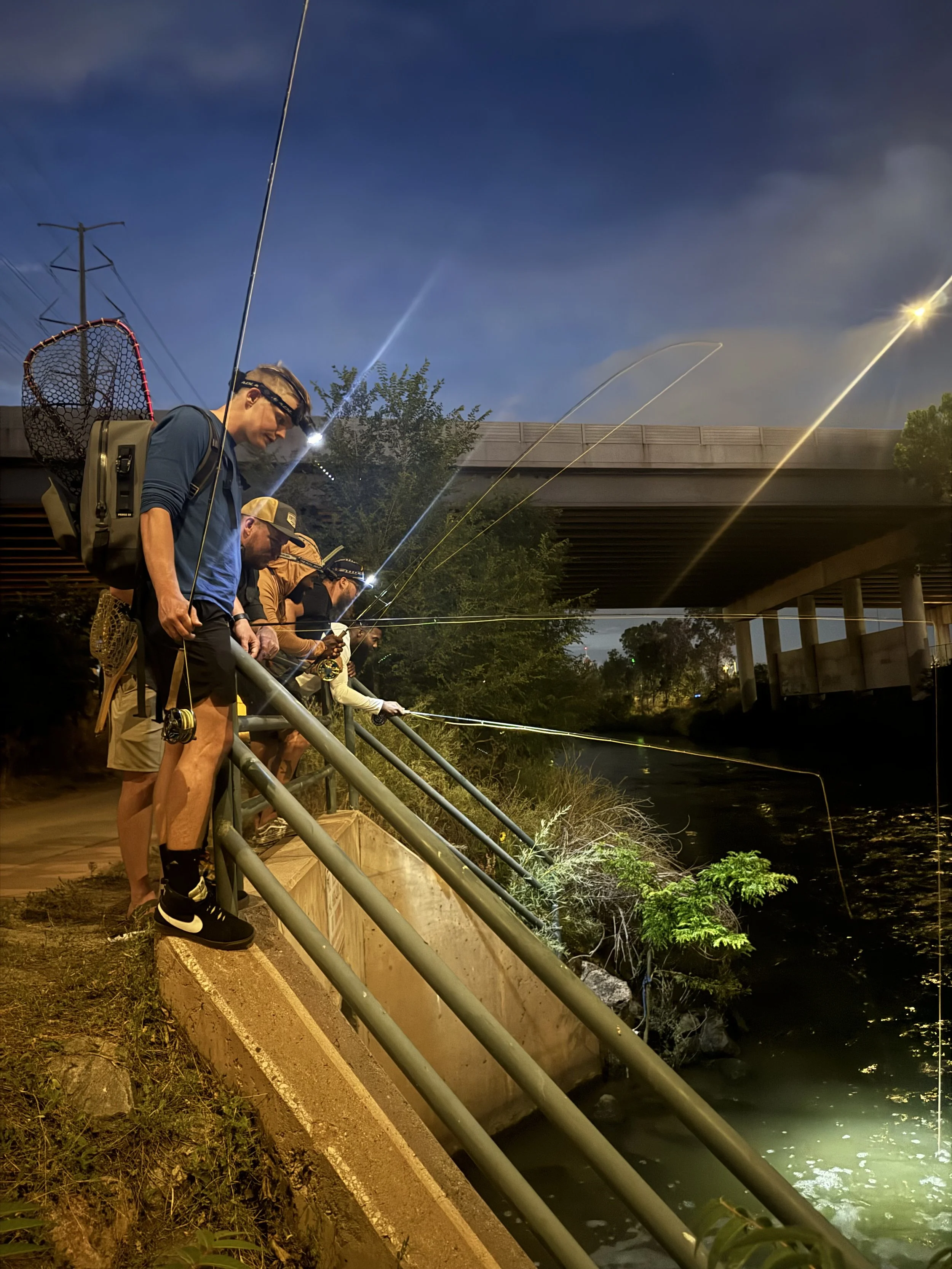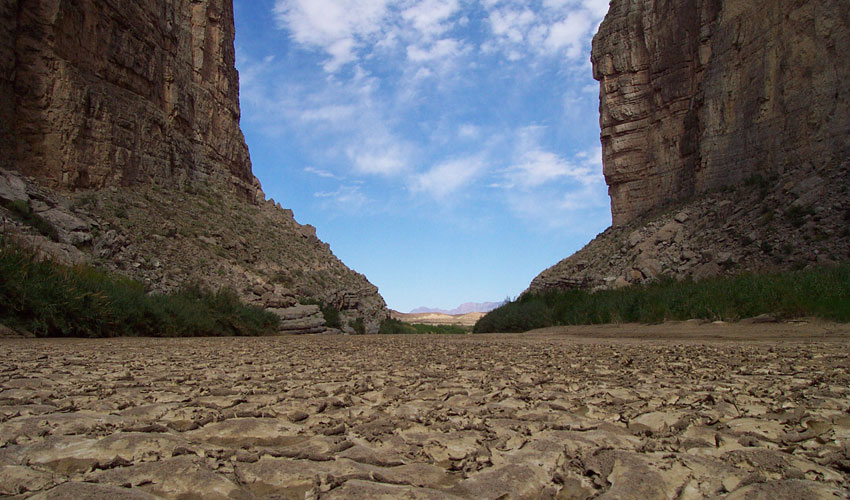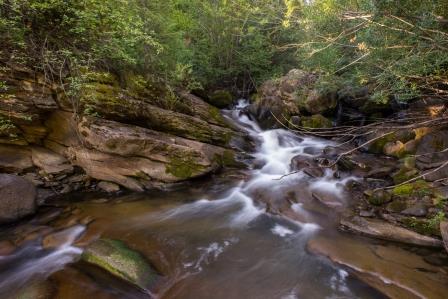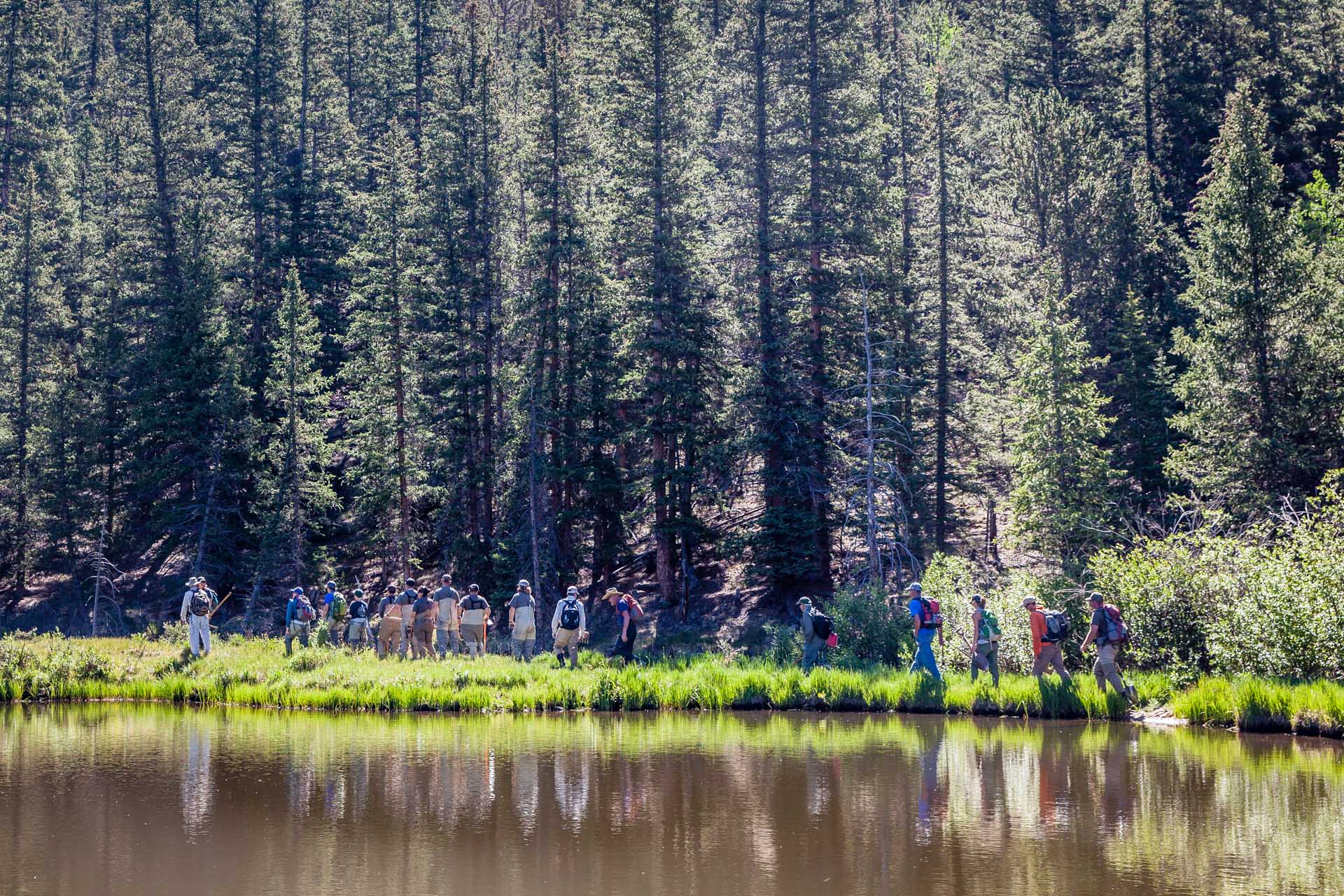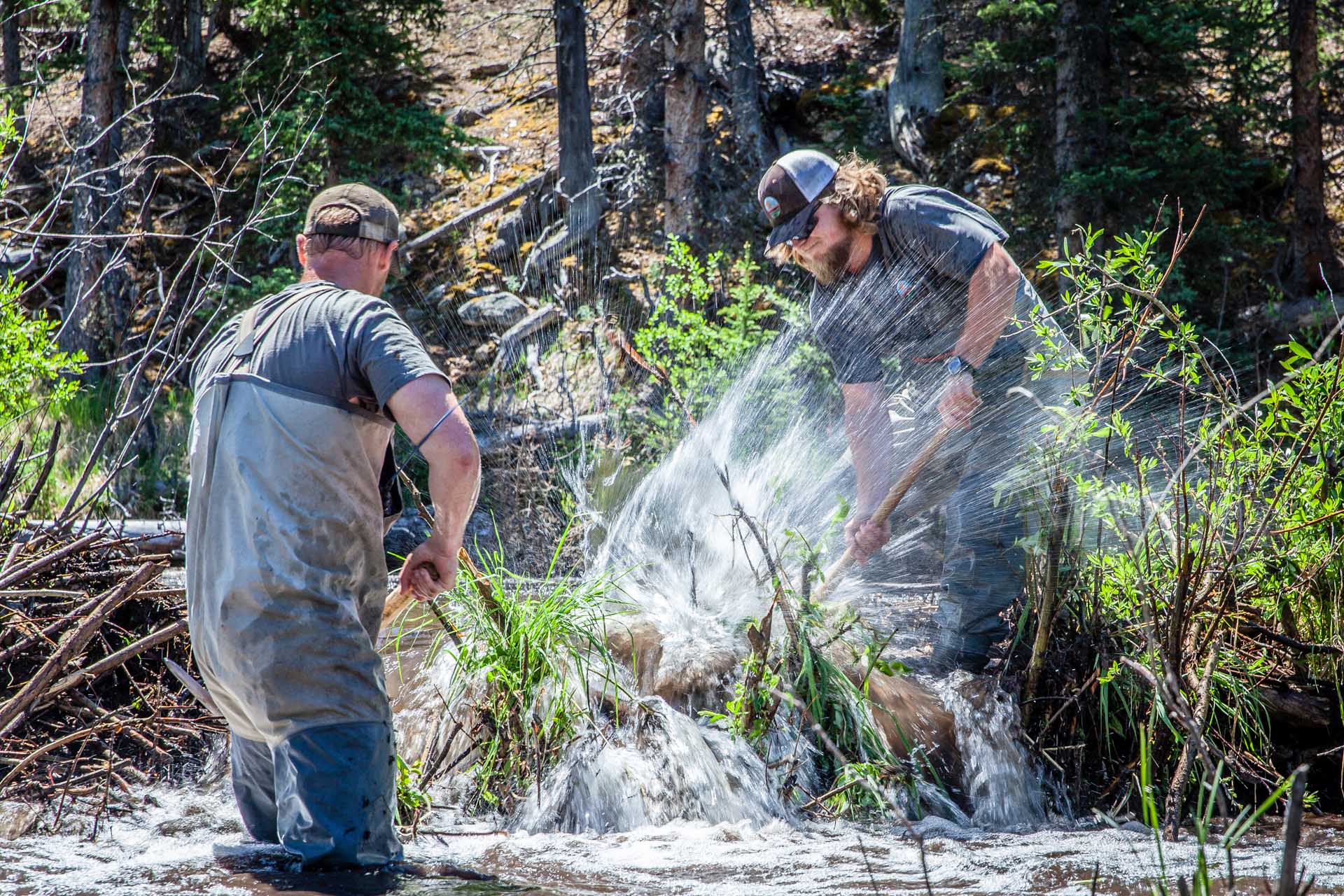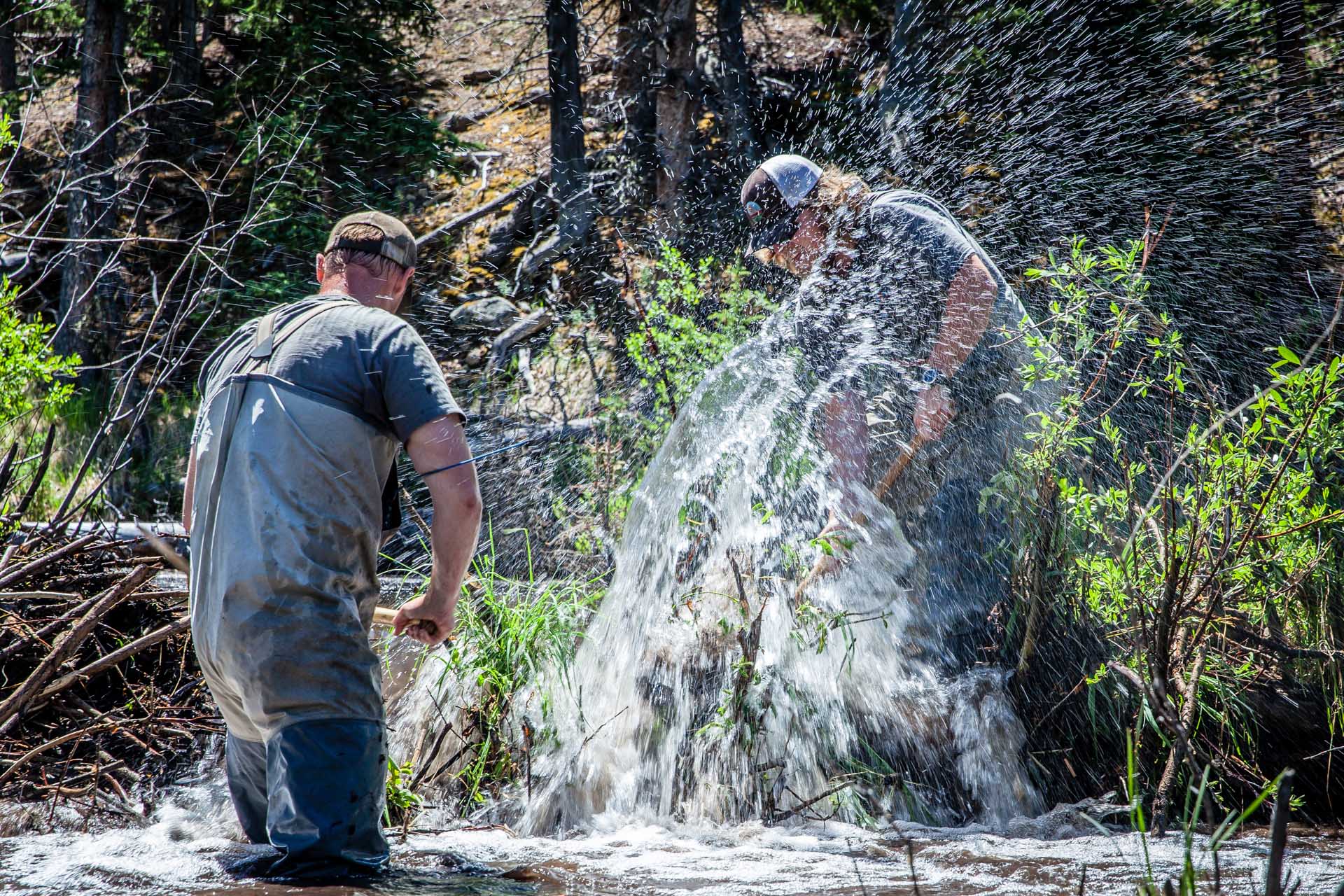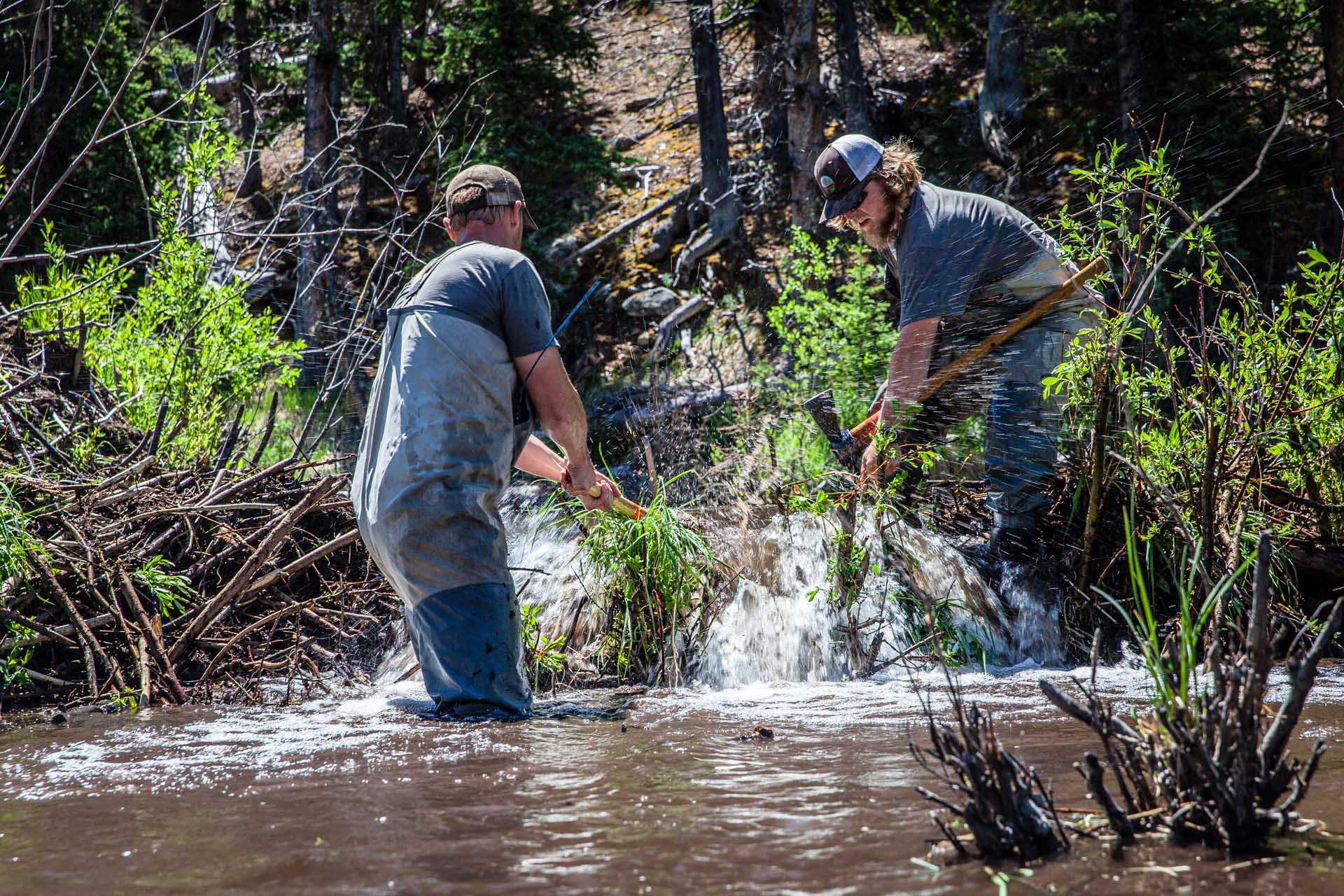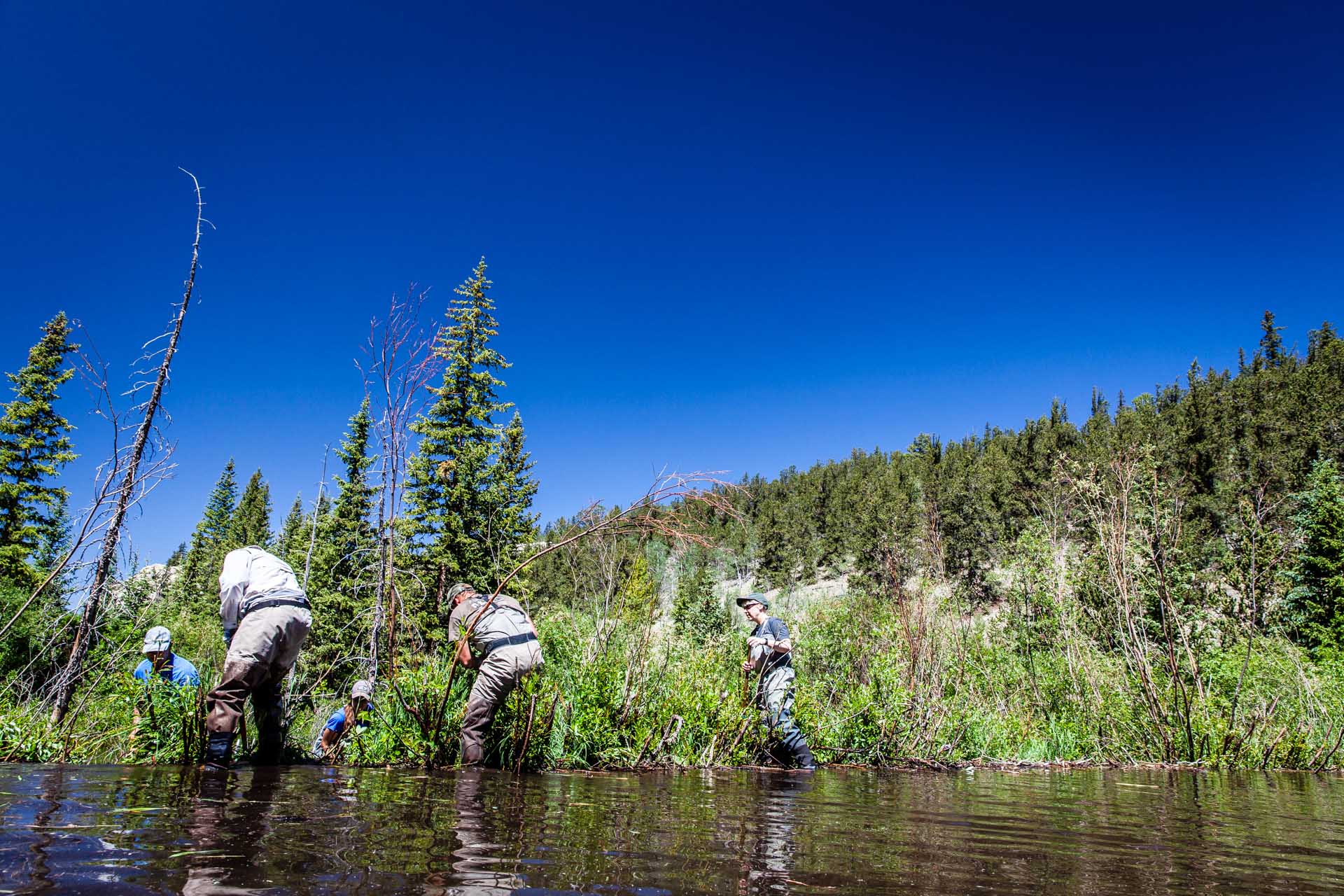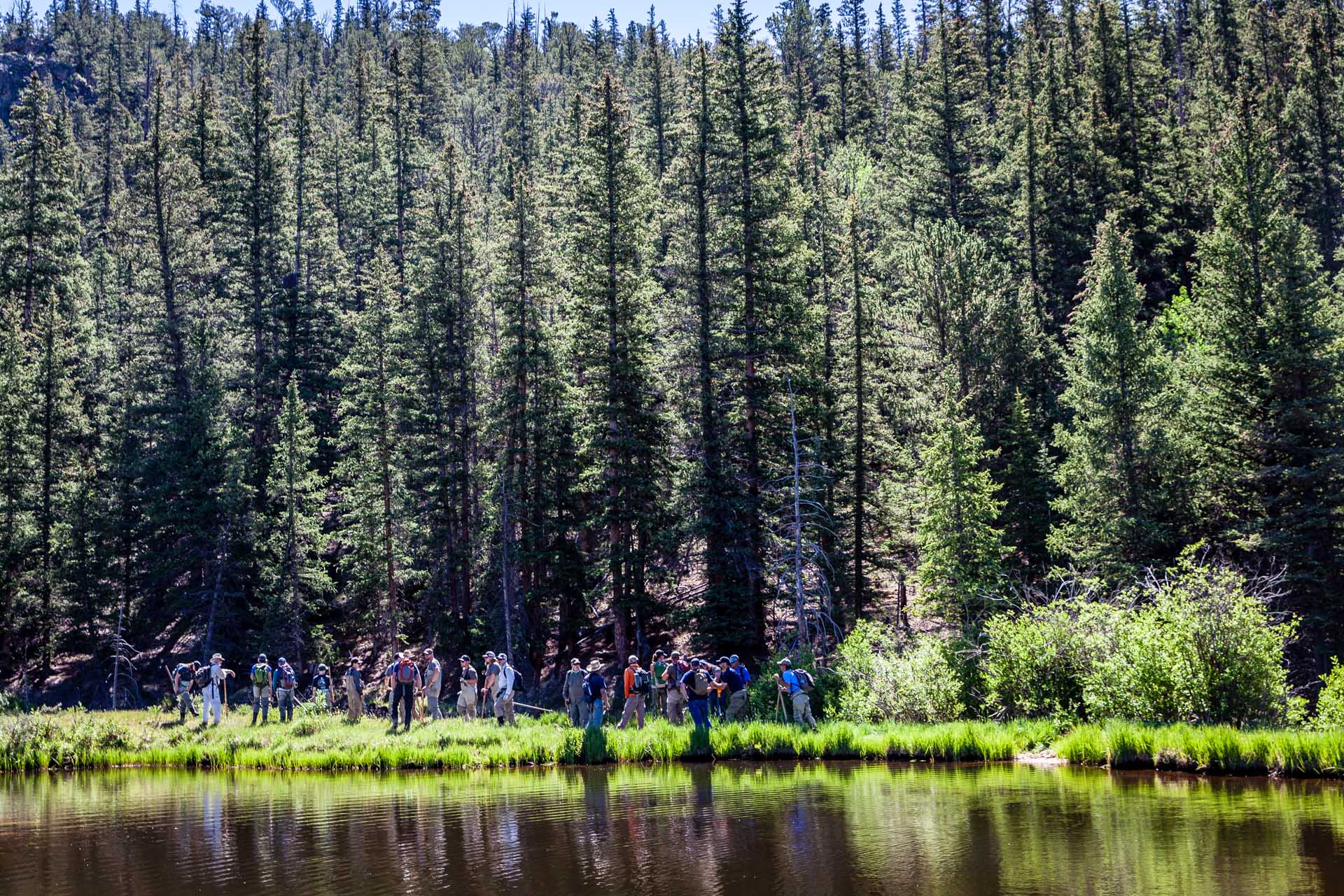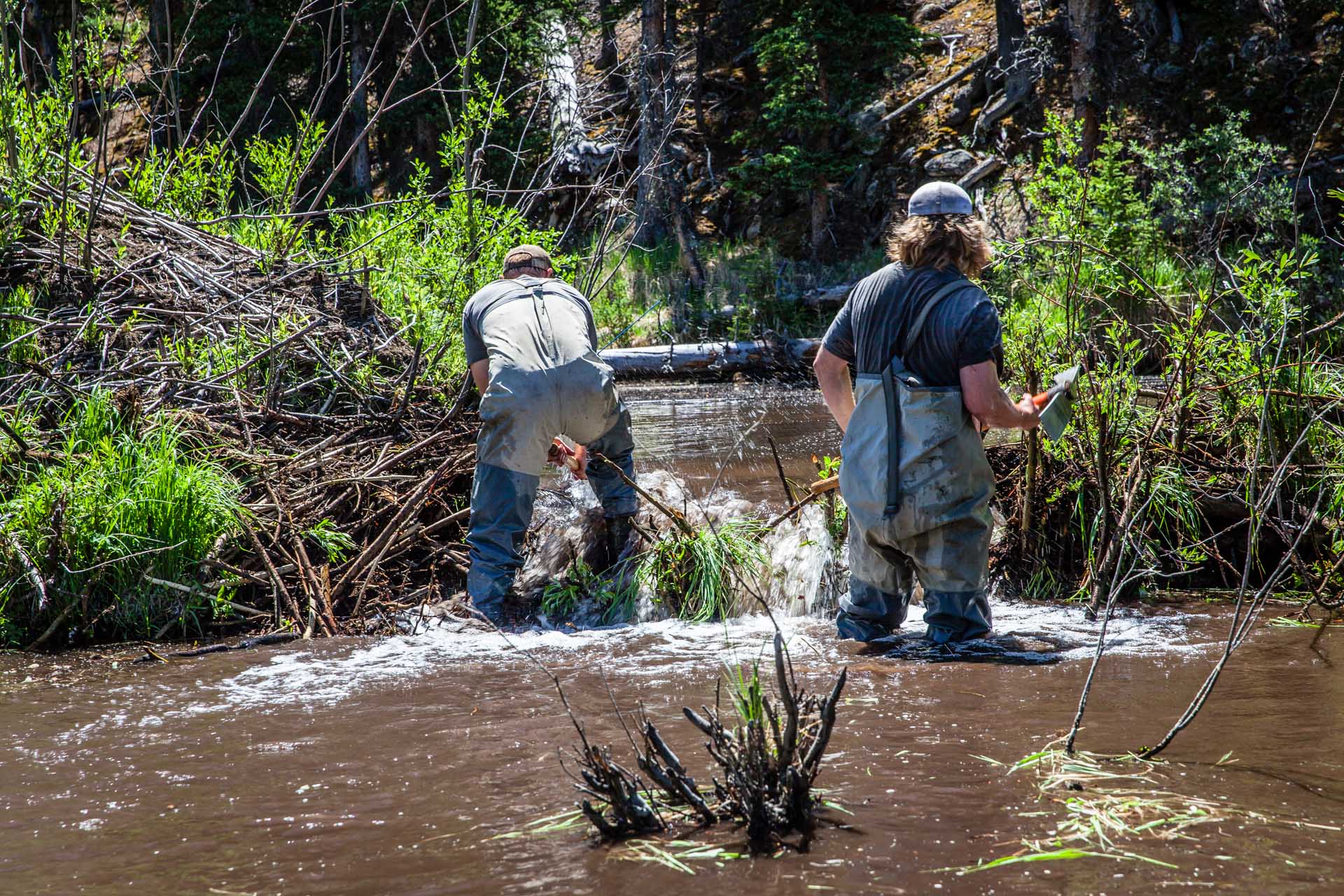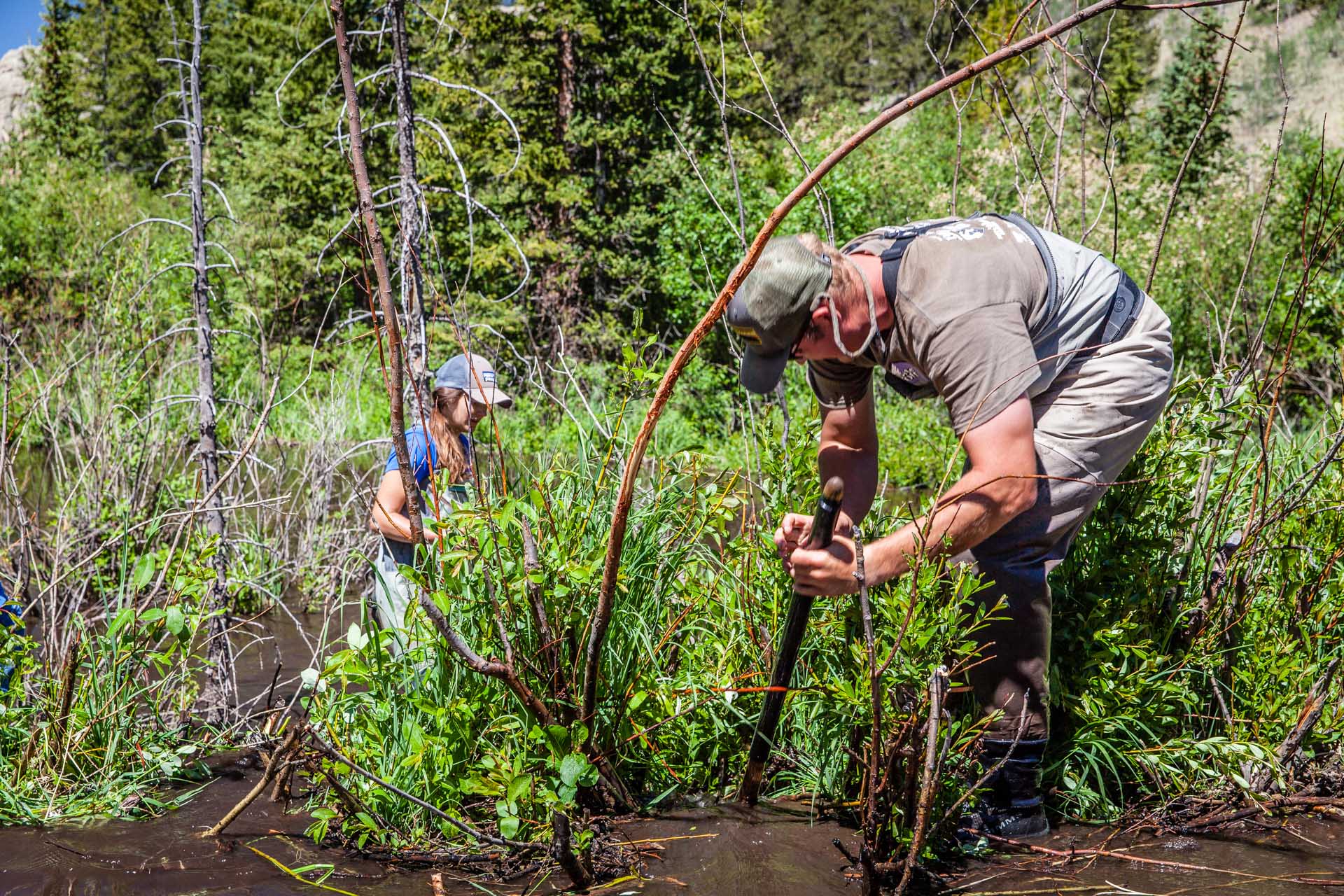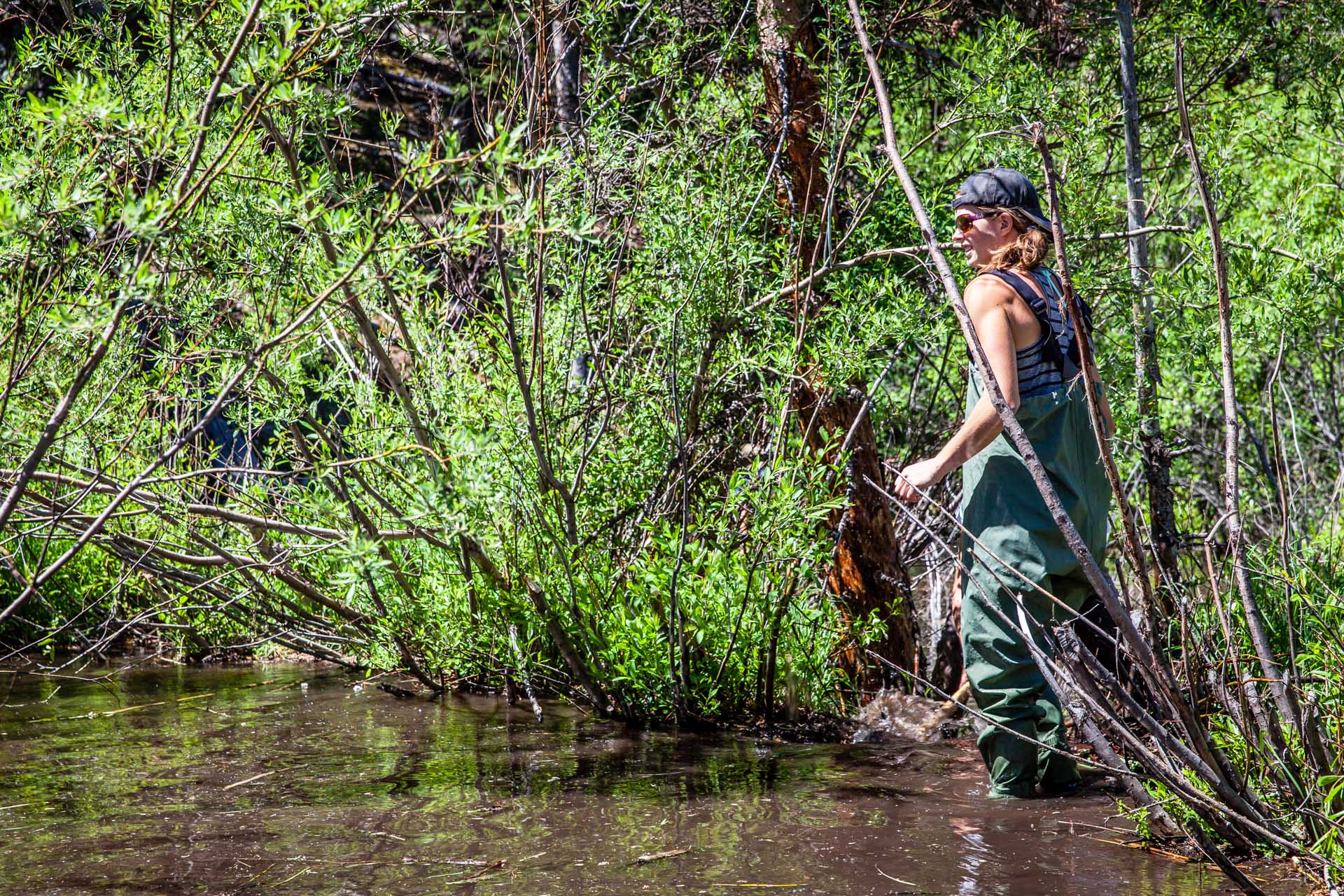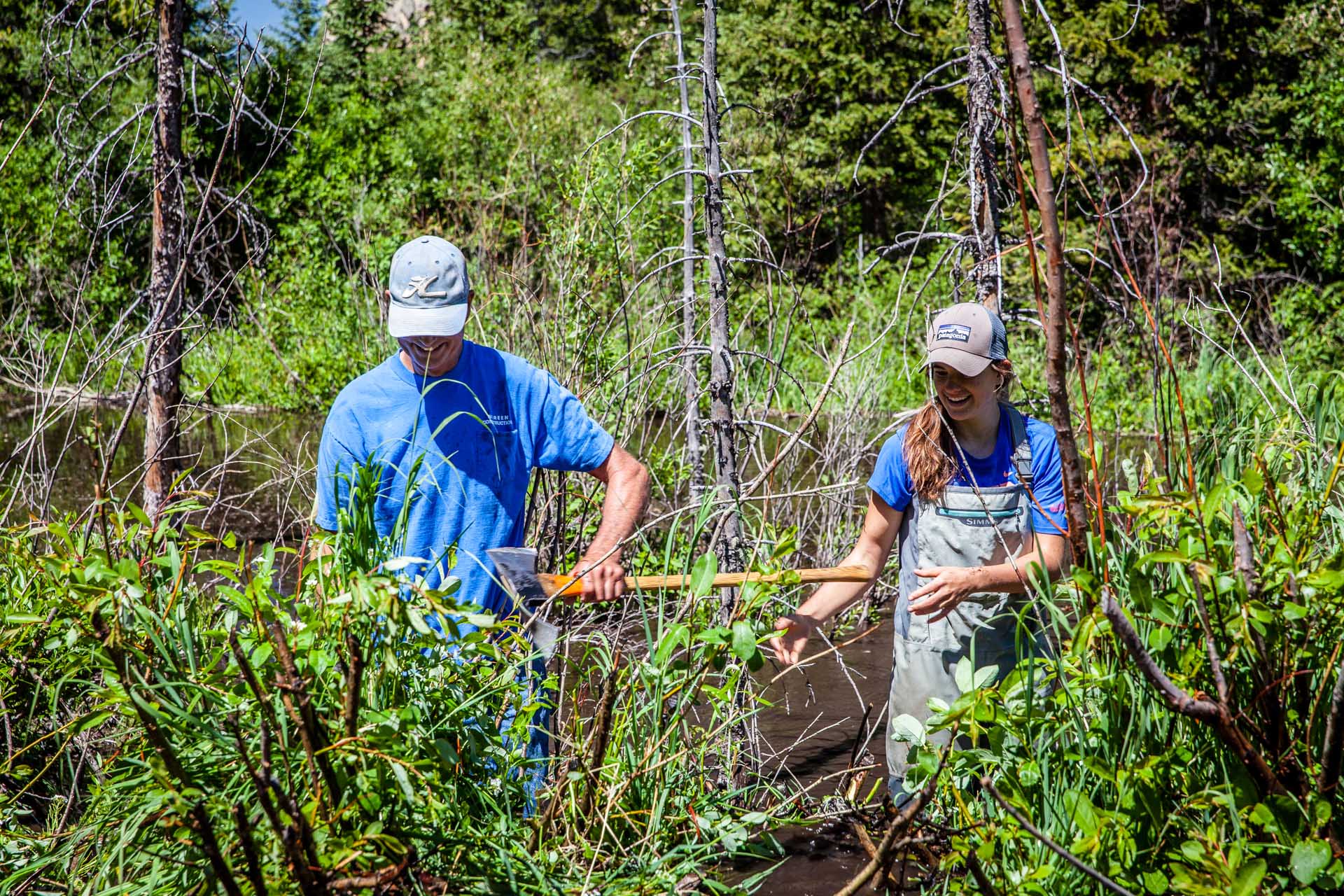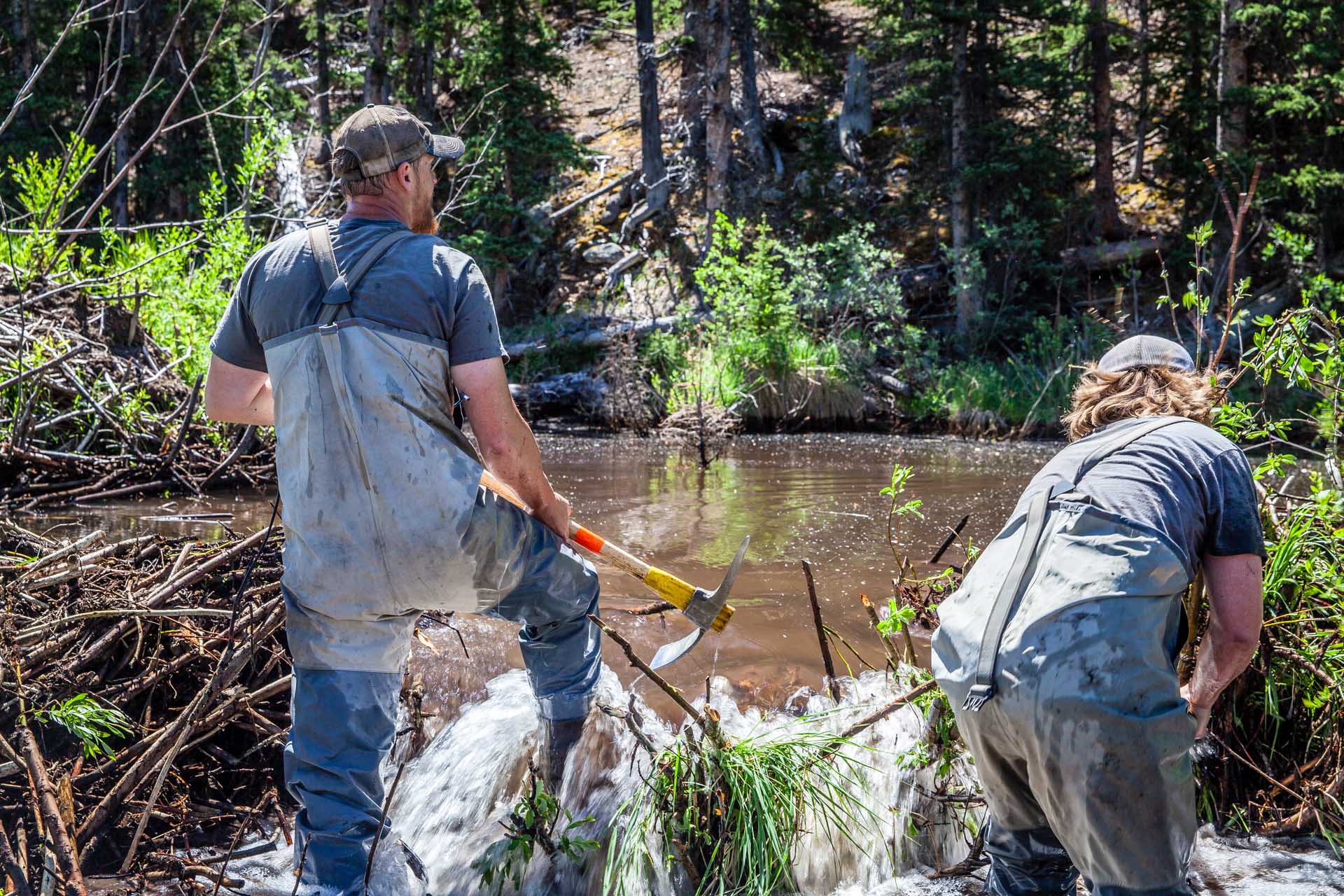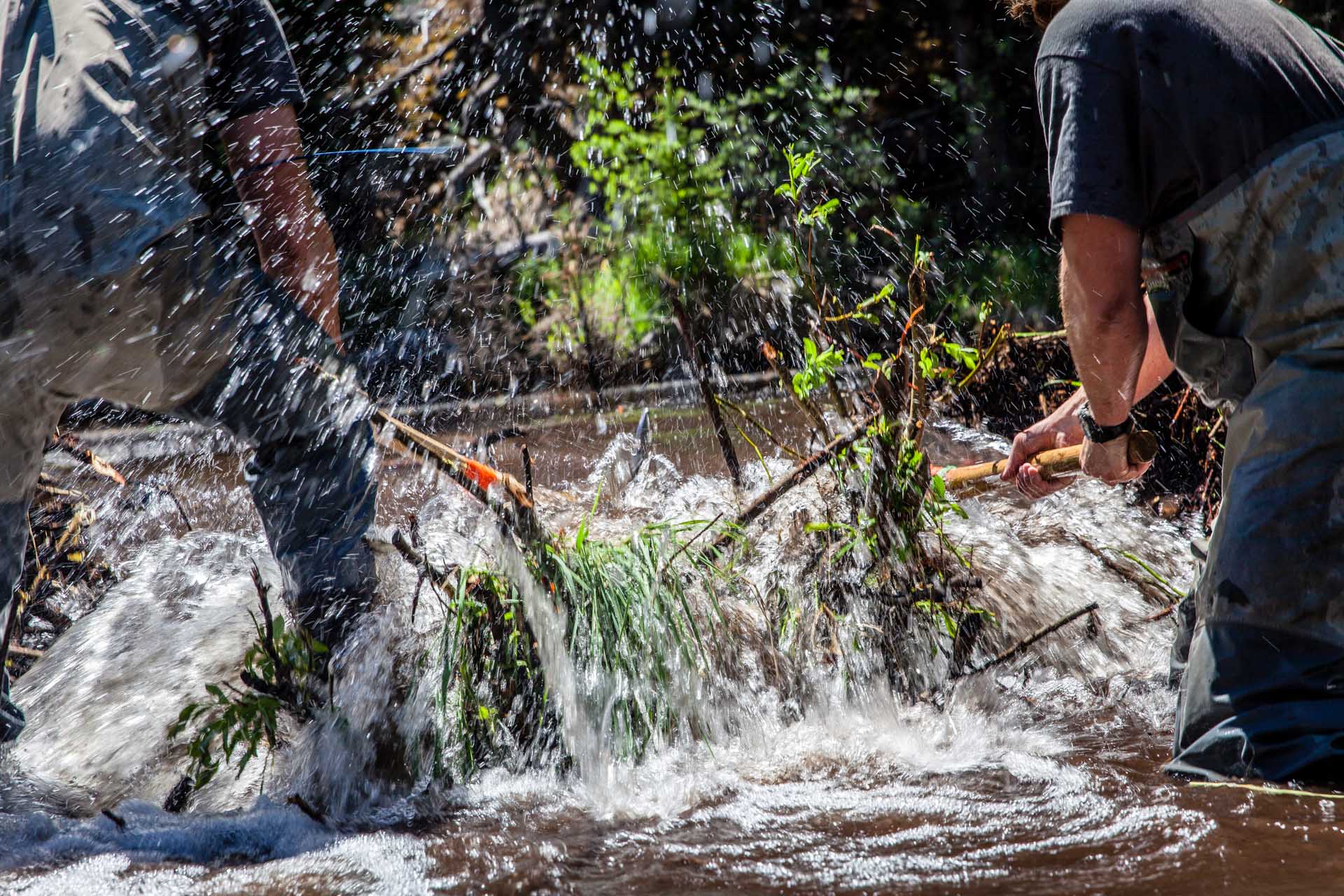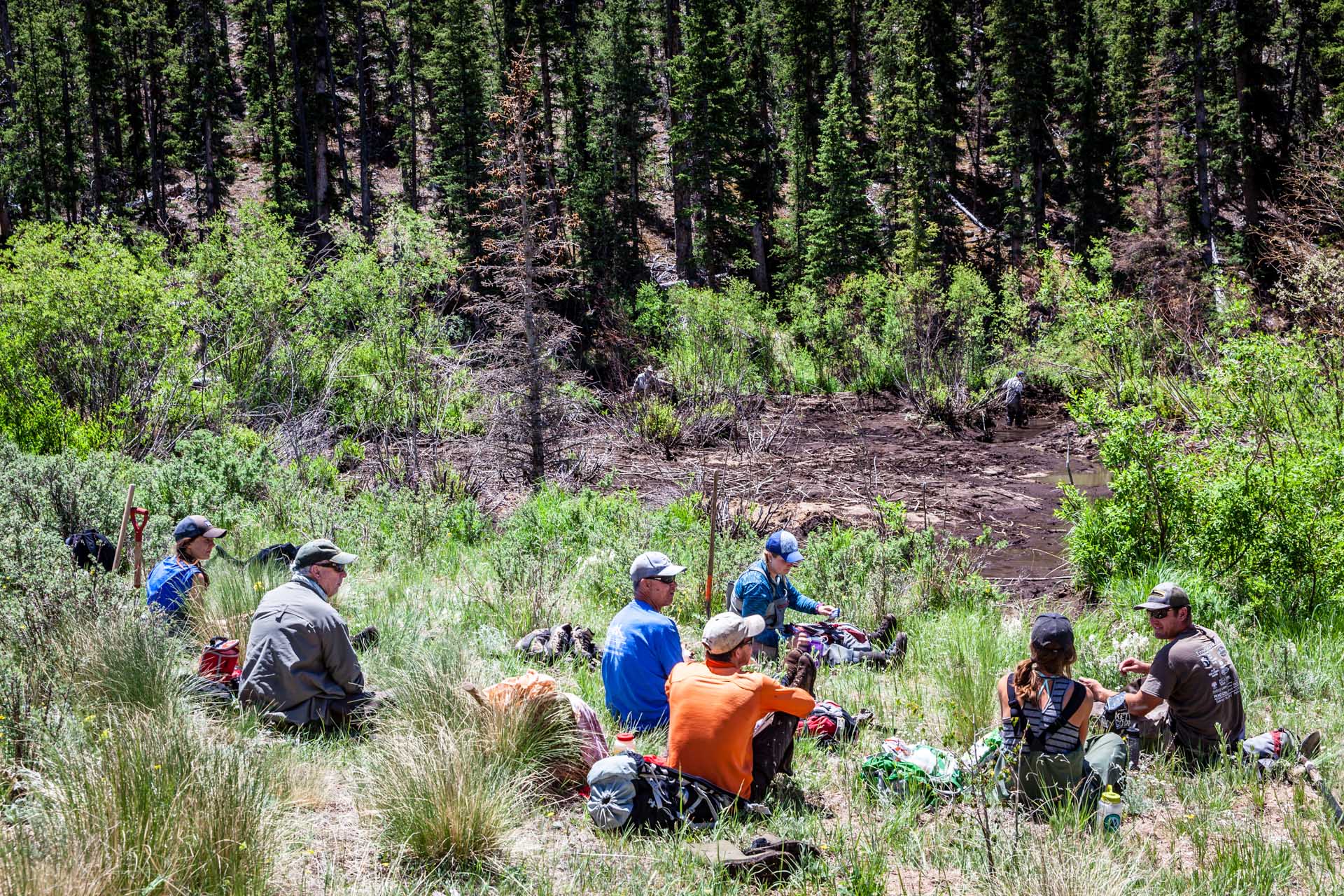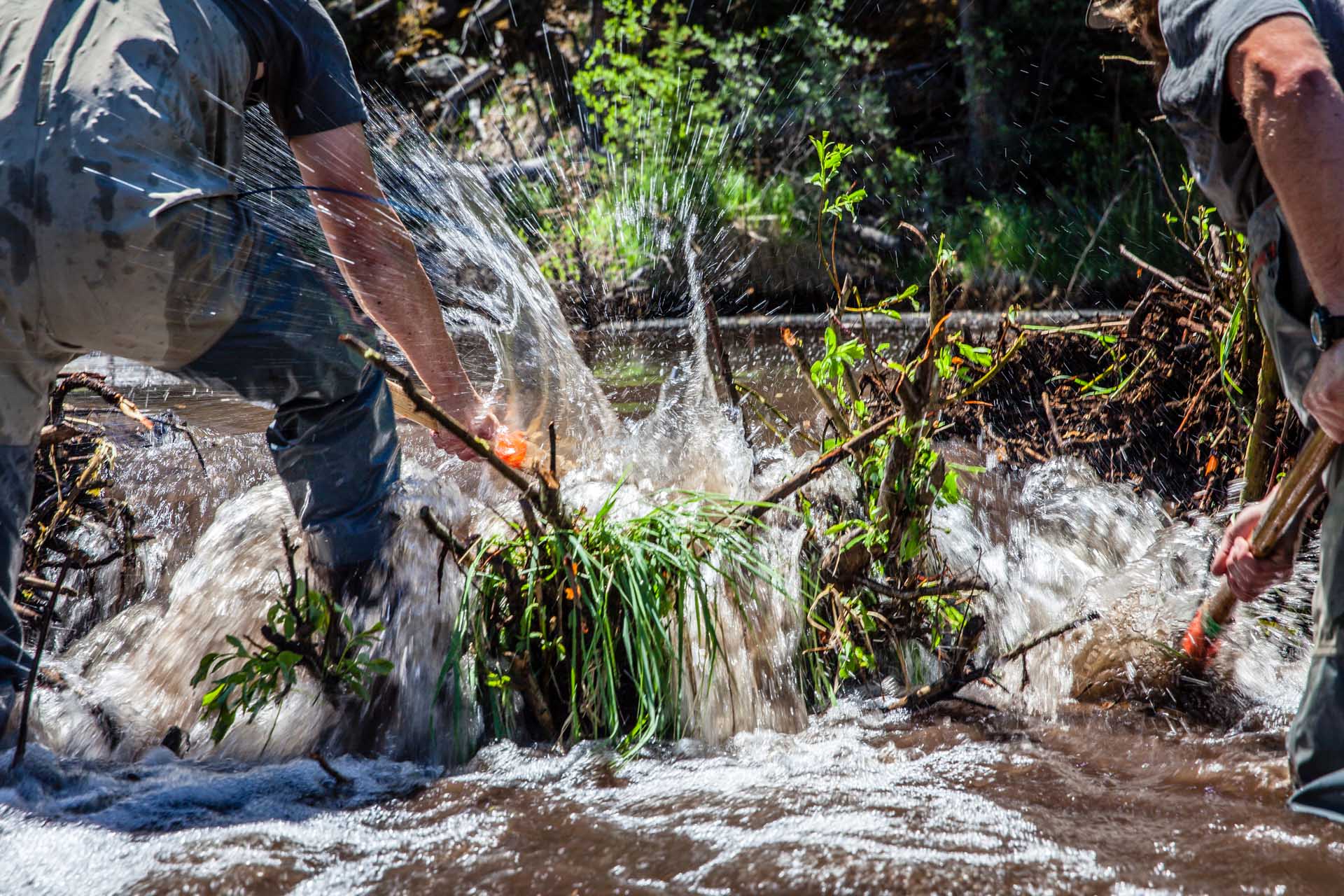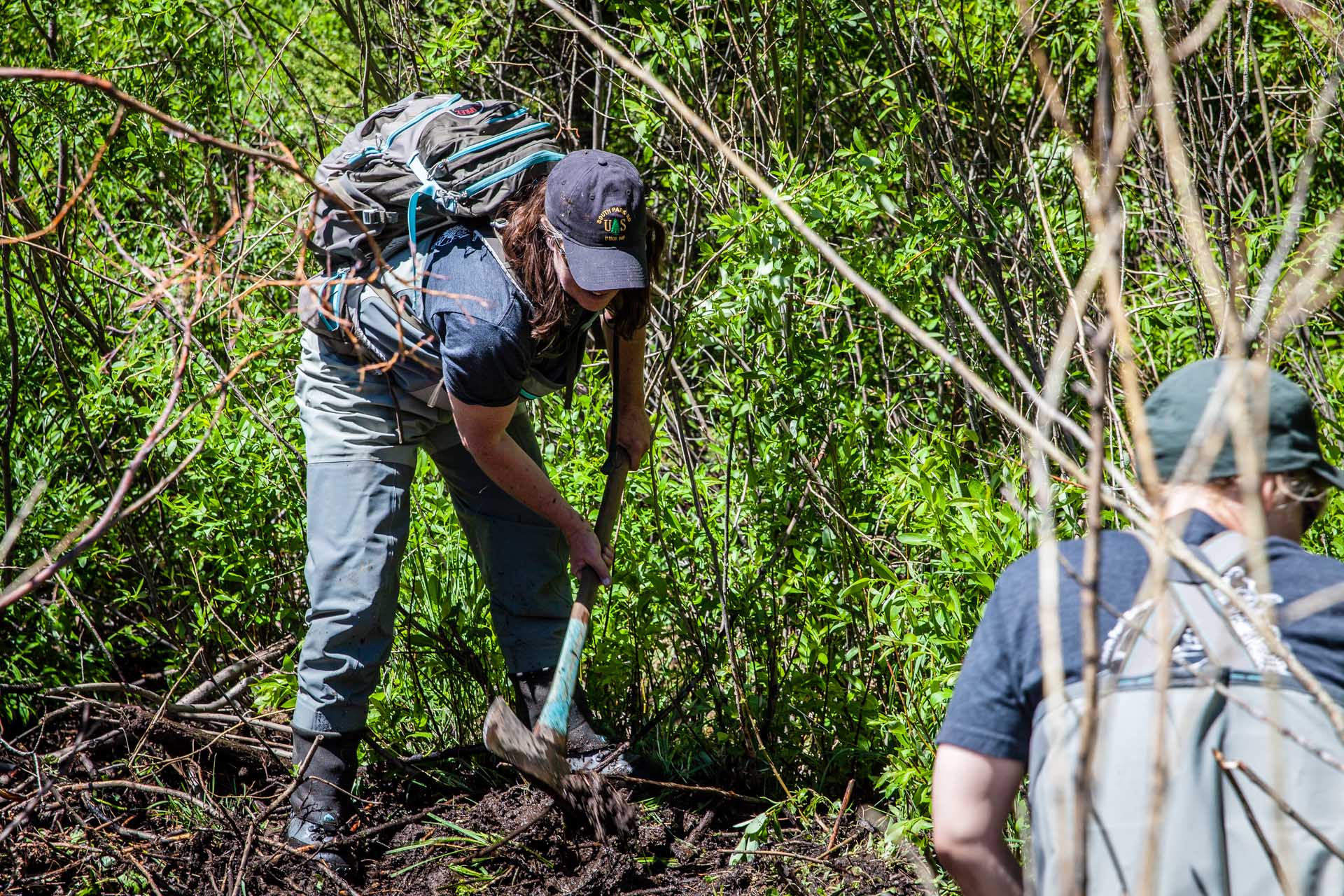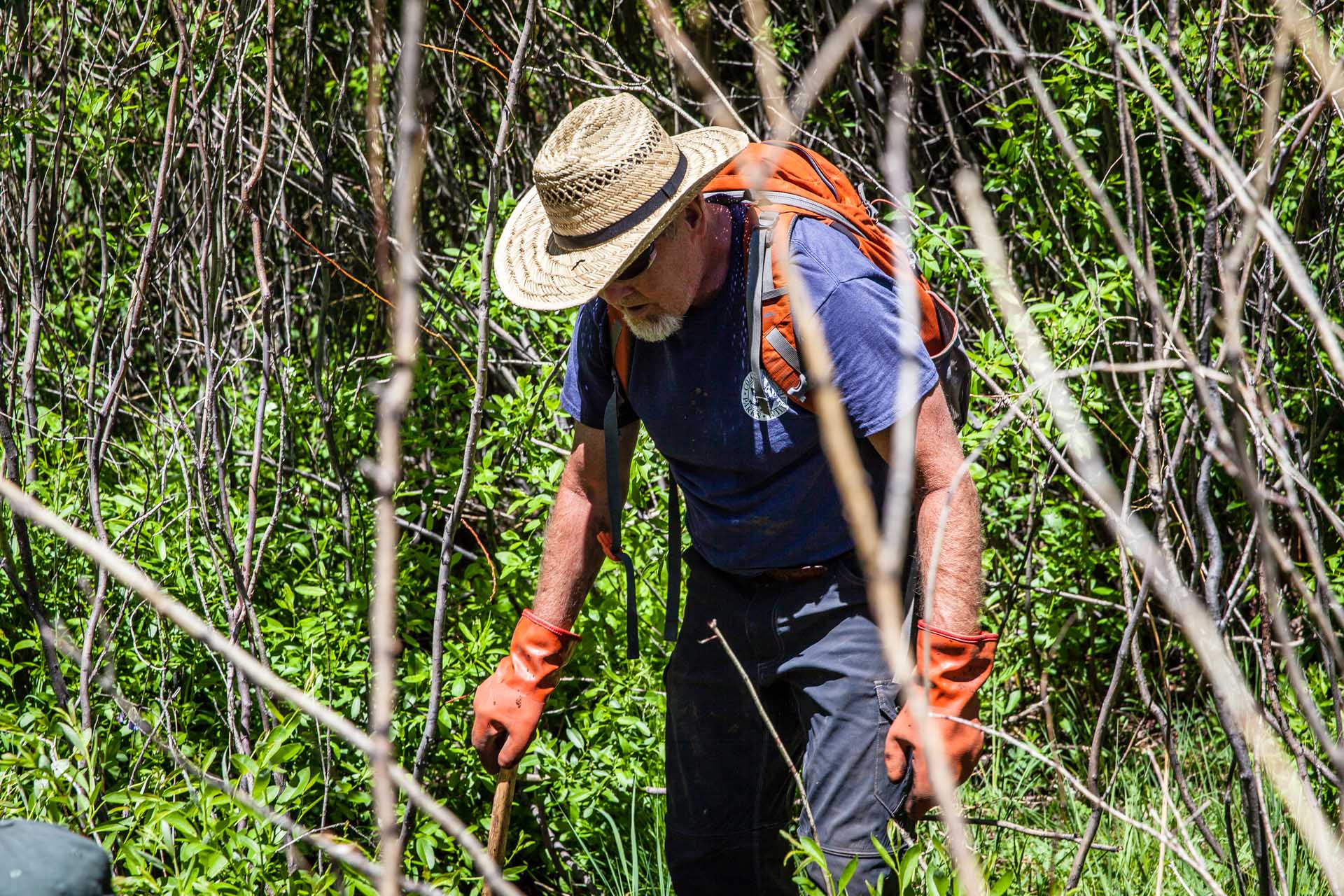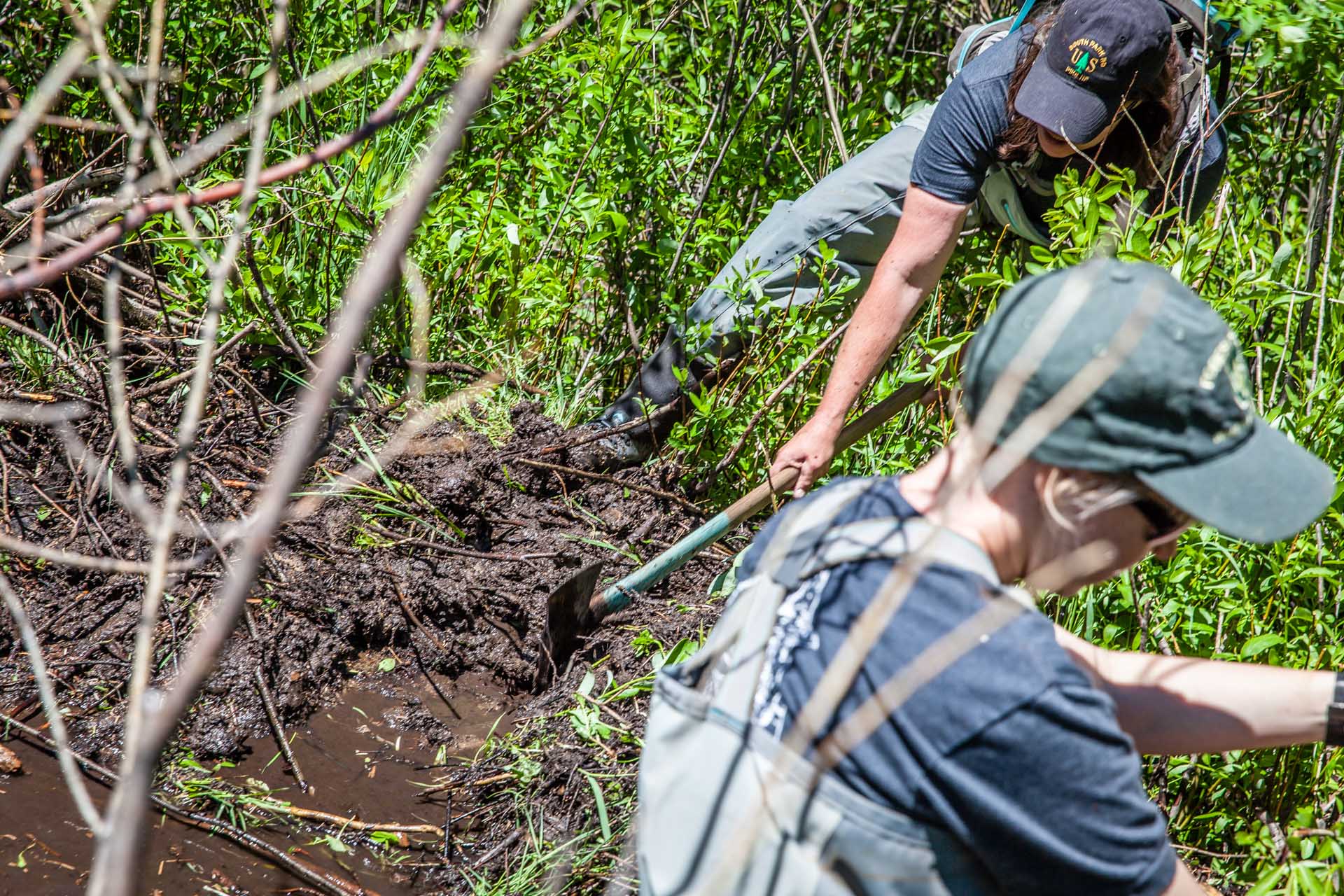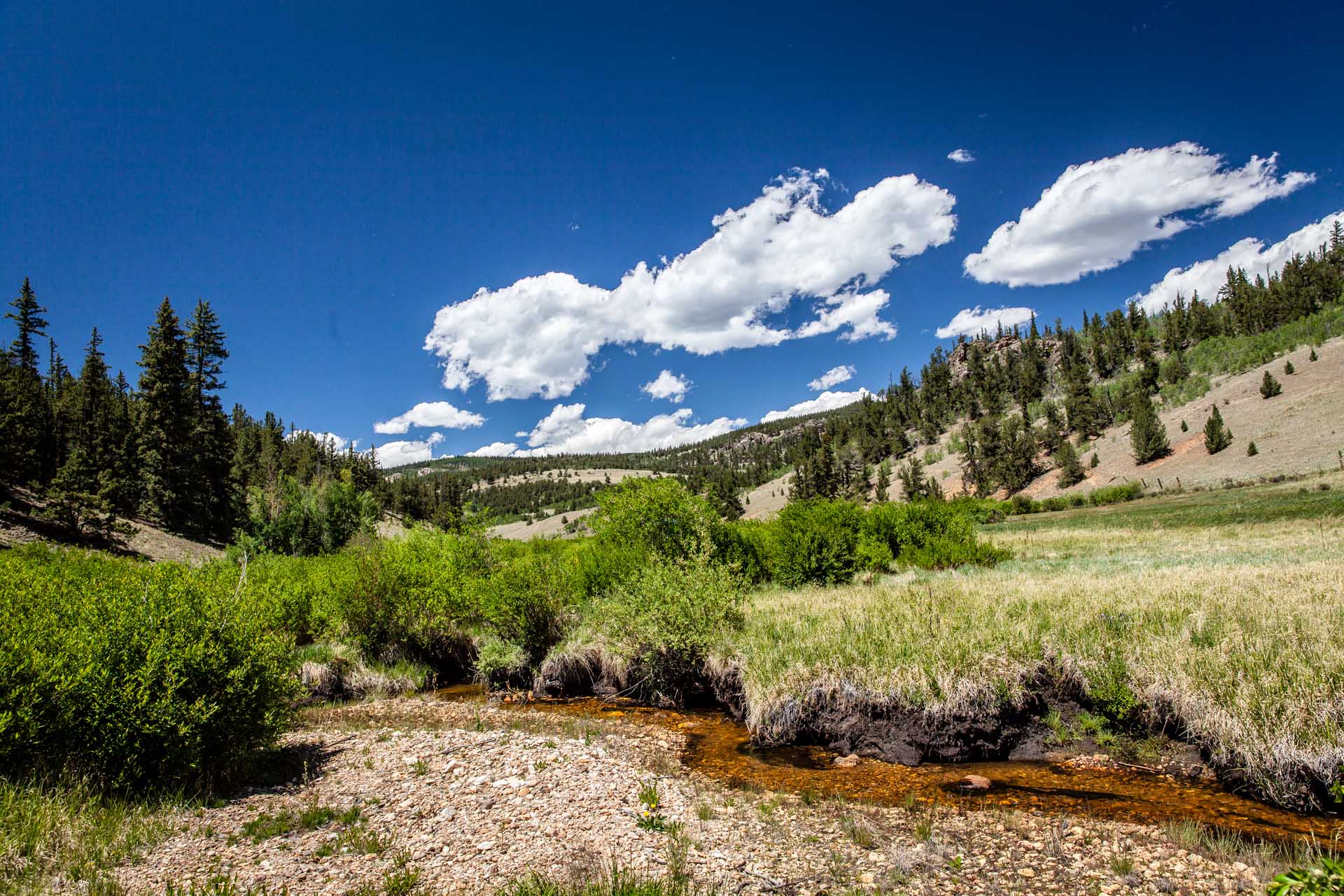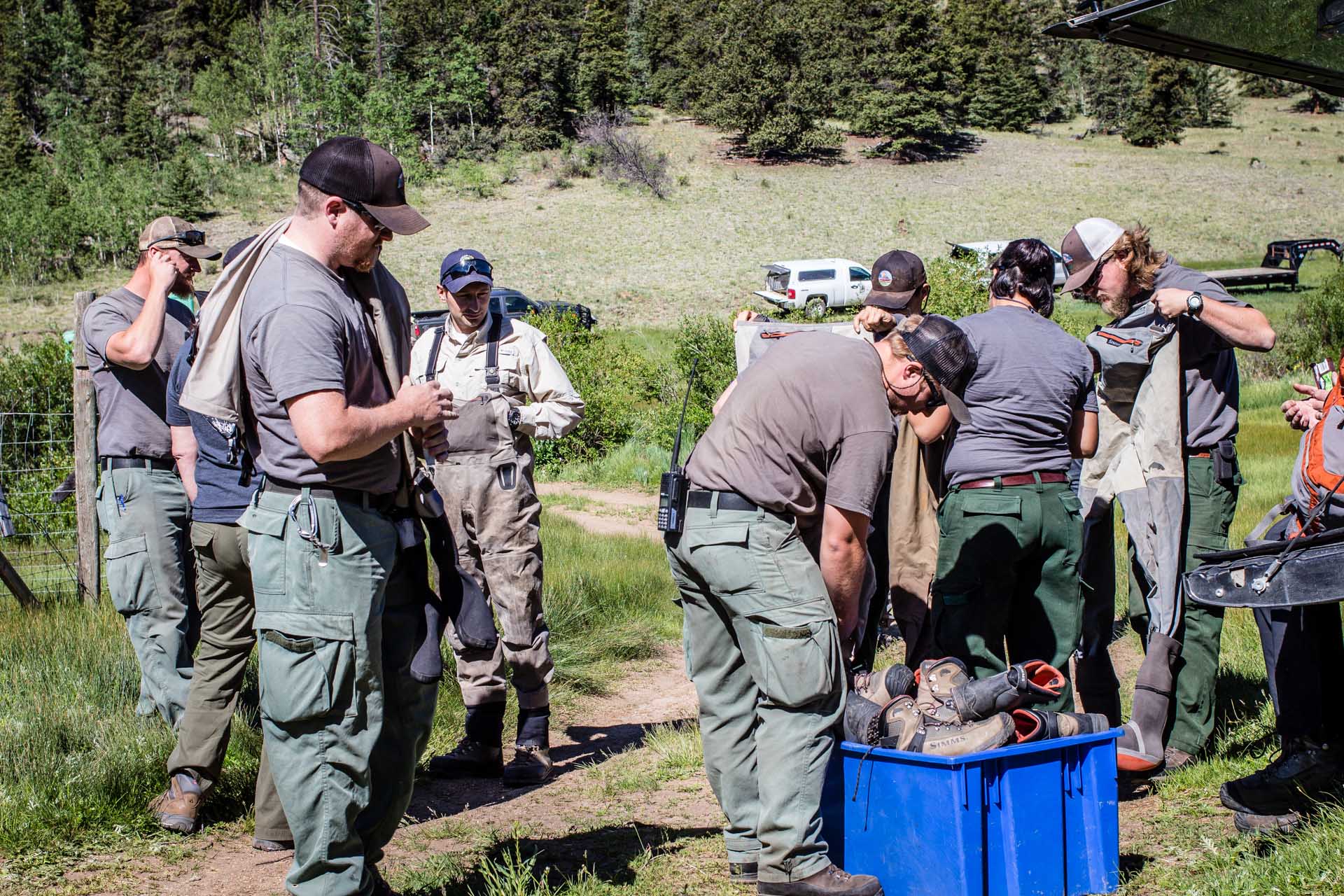ALMONT, CO – Have you ever wanted to learn more about the lifecycles of aquatic insects? Or new techniques for fly tying and casting? Perhaps you have always wanted to tour a fish hatchery, or learn more about river conservation. Well, sixteen youth had that very opportunity this past month. From June 10 to June 16, teens from across Colorado came together at the Silent Spring Resort in Almont, CO, for the 10th Annual Colorado TU Youth Conservation and Fly Fishing Camp.
Organized by CTU staff and volunteers, the week-long camp offers unique, hands-on opportunities to learn about bugs, hydrology, fly-tying, casting, knots, reading water, and safe wading techniques. This year, campers also enjoyed presentations from outside speakers that included: water law, the Natural Resource Conservation Service, a tour of ranch land near Gothic, CO by the Crested Butte Land Trust, and a walk-through of the Roaring Judy Fish Hatchery. The week was capped off with a willow-planting project on the Gunnison River, some great fishing, and a private screening of the Fly Fishing Film Tour, made possible by Mayfly Media.
In addition to becoming better anglers, these young adults learned the importance of conservation and the impact it has on their favorite waters. Campers also made life-long friends and connected with a whole new watershed. The CTU Youth Conservation and Fly Fishing Camp has now completed a decade of getting youth out on the water and teaching the next generation of anglers. We are proud to see so many students returning year after year as counselors, sharing what they learned and inspiring their peers.
This camp would not be possible without the generous support of our chapters and partners. We would especially like to thank the Silent Spring Resort and staff for your amazing hospitality and great venue, the Colorado Rod Makers Reunion, the CTU River Stewardship Council, the Sharon Lance Youth Fund, and Mayfly Media. You can see more pictures from the camp by visiting: https://coloradotu.org/youth-conservation-and-fly-fishing-camp
For more information about the 2019 CTU Youth Conversation and Fly Fishing Camp, please contact Dan Omasta, domasta@tu.org.



